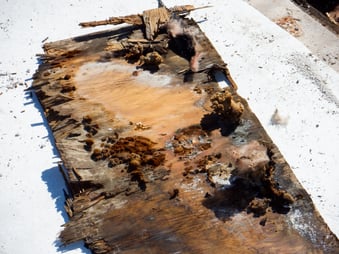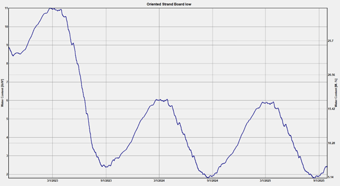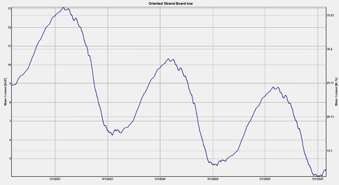At some point, someone decided to fight global warming by making roofs white. Since then, there has been conflicting data as to whether white roofs actually save energy, or do anything positive toward helping global warming. I am all for saving energy, and there are many ways to do so.
In our industry, the best way to save energy is to build a durable system correctly the first time.
Color Matters
While there are a lot of ways to install roofs the right way as well as the wrong way, there is one very large consideration that is almost never considered: Color.
In fact, because of the energy hype, it may be considered bad practice to install anything but a white roof membrane on a flat roof. It usually takes more than one factor for a system to perform poorly. Color doesn’t necessary cause damage, but it can be a factor that reduces normal drying affects and contributes to condensation on the underside of the roof sheathing in some cases.



Solar Reflectivity
Solar reflectance is the ability of a material to reflect, not absorb, energy from the sun. This principle is “common knowledge” –we all know that the surface of a black car will be hotter than a white car parked next to each other on a hot summer day. Below is a list of solar reflectivity values for various roof membrane colors. These are approximate as roofing manufacturers can differ, and color changes over time. Values can conceptually range from 0.0 to 1.0. Notice the large difference in values of white compared to all the others:
| White TPO/PVC |
0.69 |
| Gray TPO/PVC |
0.23 |
| Black EPDM |
0.06 |
| Smooth Bitumen |
0.06 |
| BUR with dark gravel |
0.12 |
Hygrothermal Modeling
This is an important-sounding term that refers to calculating temperature and moisture in a building material. It’s complicated. It involves solving two very complex differential equations at the same time. Not many people can actually solve these 2 equations, but there is a fancy computer program that can: WUFI (it’s a German acronym for something that has to do with temperature and moisture).
Basically, you input material properties for all layers of building materials that occur in a wall or roof assembly, then input weather data on the outside of the assembly and interior conditions on the inside of the assembly. The program calculates temperature and moisture in all materials every hour for however long you want to run the model. Unfortunately, this type of software can’t predict the future and results can be misleading and overly relied-upon.
But—WUFI does a great job of comparing what likely happens in a particular building material if only one parameter is changed, and all other parameters stay the same. Did this make things better or worse?
The graphs below show what happens to roof sheathing for a particular roof system over a 3-year period. In both cases, the OSB roof sheathing is set to start off “wet” to see how well it dries. There is only one parameter that changes between the two models: a gray roof membrane vs. a white roof membrane.
The OSB sheathing under the rooftop insulation, under the gray membrane dries out to acceptable levels after a few months. The OSB sheathing under the rooftop insulation, under the white roof membrane dries much slower and stays in moisture content ranges that will create a damaging environment for wood.
All other things being equal, the darker color roof performs much better from a condensation control standpoint.
| Grey Roofing Membrane |
White Roofing Membrane |
 |
 |
Conclusions
- Hire a roof consultant with experience in weatherization detailing as well as hygrothermal analysis to help ensure the proposed roofing system will perform as intended.
- Design for Longevity first, Energy second (or third…)
- Avoid venting flat roofs – insulate the top of the deck instead. (This wasn’t discussed above, but it’s a related topic. Too many stars must align for this to actually work for low slope roofs. Lighter roof colors will magnify potential issues with poor ventilation.)
- All other things being equal, a roof system with a dark color roof membrane will have less condensation issues than a white roof membrane. Replacing your black built-up-roof with a new white single-ply membrane may be a bad idea unless other improvements are made.
So, what color roof do you have? 👇